Busan, Korea
Busan is the 2nd largest city in Korea with 3.5 million people
Located on Korea’s southeastern shore, it’s best known for its seaport and beaches
Traveling to Busan was a long time coming for me. I had lived in Fukuoka, Japan, just a short boat ride away but for some reason never made the trip.
I finally visited during my second trip to Korea in 2019.
Things to know
Google Maps isn’t as useful - locations are scarce, often don’t translate from Korean, and don’t contain detailed information
There’s a lot of walking - Escalators in train stations are limited, blocks are big and main streets are wide
How to get there
A lot of people, like us, will be flying in and out of Seoul and making Busan a mini-trip. Busan is only about a 3-hour train ride on the Korail KTX. You can reserve tickets online here, but just know that the site is not mobile-friendly and overall isn’t that good.
If you print out your tickets, you can bypass the ticket office and just go to board your train. It’s all reserved seating and our tickets were never actually checked or used.
Busan is also a short boat ride from Fukuoka, Japan. The JR Beetle is a hydrofoil that sails between Hakata and Busan in about 3 hours. You can purchase tickets here or on their Japanese site. They also have a higher end JR Queen Beetle set to start sailing in July 2020.
Where we stayed
Only spending two days and one night in Busan, we prioritized location and cost. We decided on the Brown Dot Hotel Seomyeong, probably a converted former love hotel or motel, conveniently located near Seomyeong and only a couple minutes from the station.
The hotel was fine for a short stay. The one issue was the toilet and shower area as the toilet is immediately next to the shower in a way that the toilet can get wet. This isn’t a hotel-specific issue, it seems that’s it’s a pretty common setup in Korea. They provided a range of amenities as well as access to take as many bottles of water as you needed.
From here, we went out and explored the city.
Seomyeong
Busan’s central area for shopping and eating out, and it was a short walk away from our hotel.
The Lotte Department Store is at the center, and there’s a bunch of terraced seating on the food court floor that featured tables and charging ports - great at providing a place to rest.
Food vendors open shop at night on the streets to the east of the department store. While we didn’t eat any of the street food, this is where we walked around to get some delicious meals (bottom).
Gamcheon Culture Village
One of the most photogenic spots in Busan. Sometimes nicknamed things like the “Santorini of Korea,” the hillside homes are covered with colorful pastels.
The area was built in the 1920s as housing for poor port laborers. After paining the neighborhood, Gamcheon transformed into an area of art and is one of the most popular tourist destinations.
We caught the #2 bus, one of a few that go up to the village, from near Jagalchi metro station (around here) up the hillside to the main stop (around here).
There’s a main street that goes through the village with cafes and touristy photo spots, but I recommend walking through the narrow alleys and stairways - it’s a lot more interesting and it puts you right at real residents’ front doors (obviously don’t be loud or disruptive).
Jagalchi Fish Market
Looking to eat some fresh fish in this port city, we went to check out Jagalchi Fish Market, the biggest in Korea. It’s located to the southeast of Jagalchi metro station - but anyone can just follow their nose!
There are numerous, old fish stands outside on the streets, and in the main building, aisles of sellers with tanks of all sorts of live seafood for sale. You can see and buy everything - eels, octopus, shellfish and everything in between.
We found a vendor and bought 2 fish for ₩400,000 (about $33 USD). They’re killed and cleaned right there, definitely not for the faint.
We were then led up to the second floor eating area where our fish were prepared into Korean-style sashimi and a hot pot. The cooking/seating fee plus a beer was an additional ₩19,000 (about $16 USD).
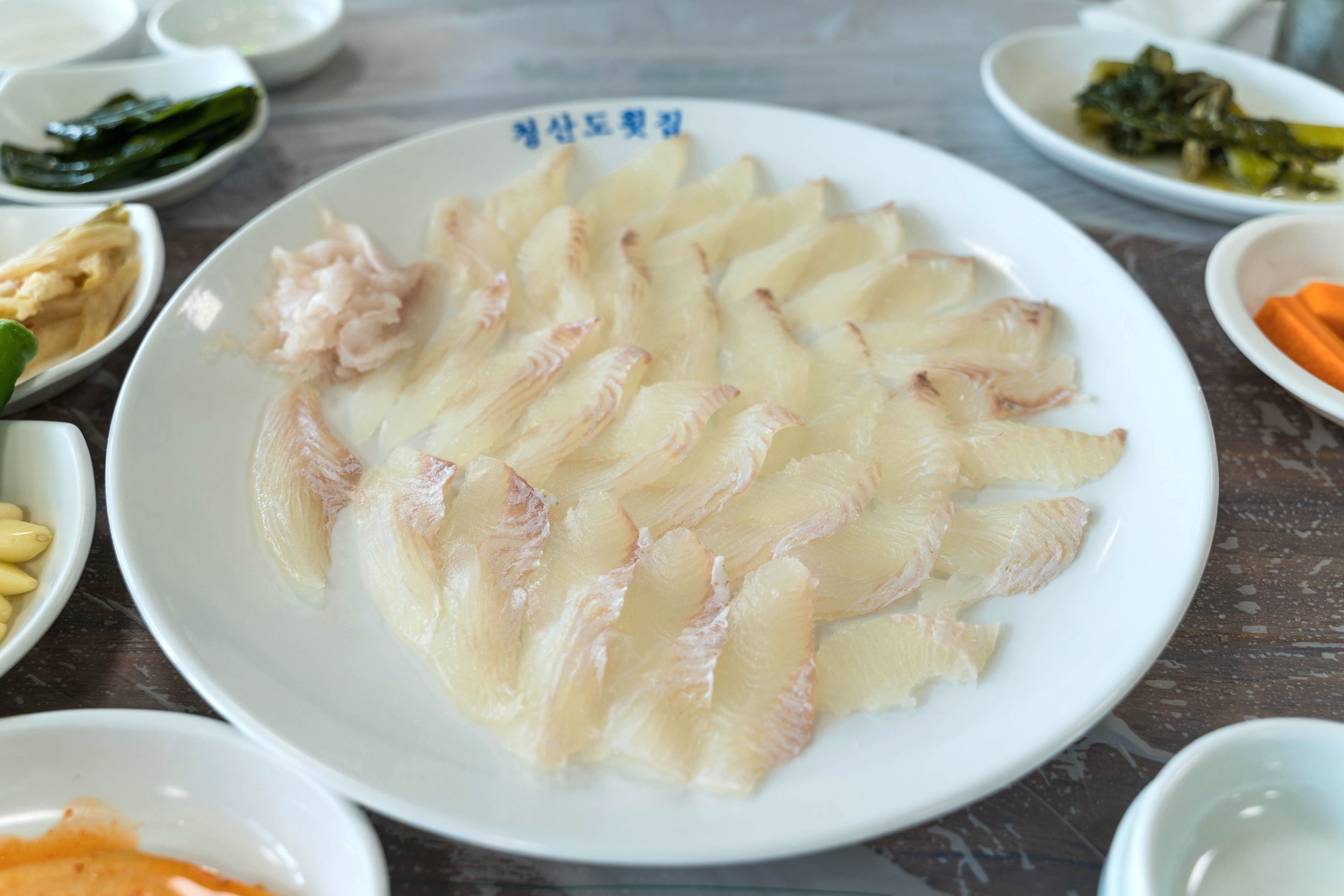
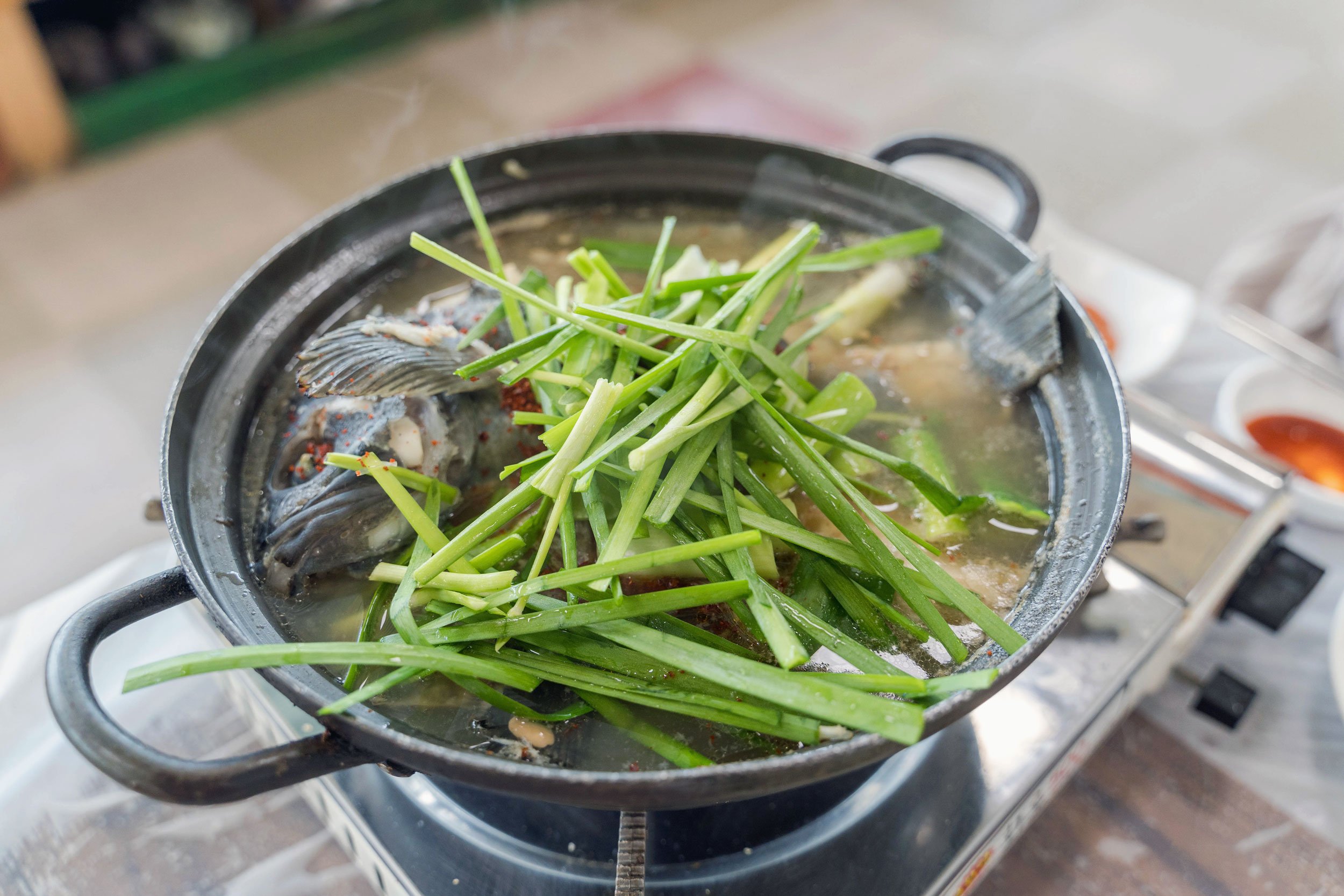
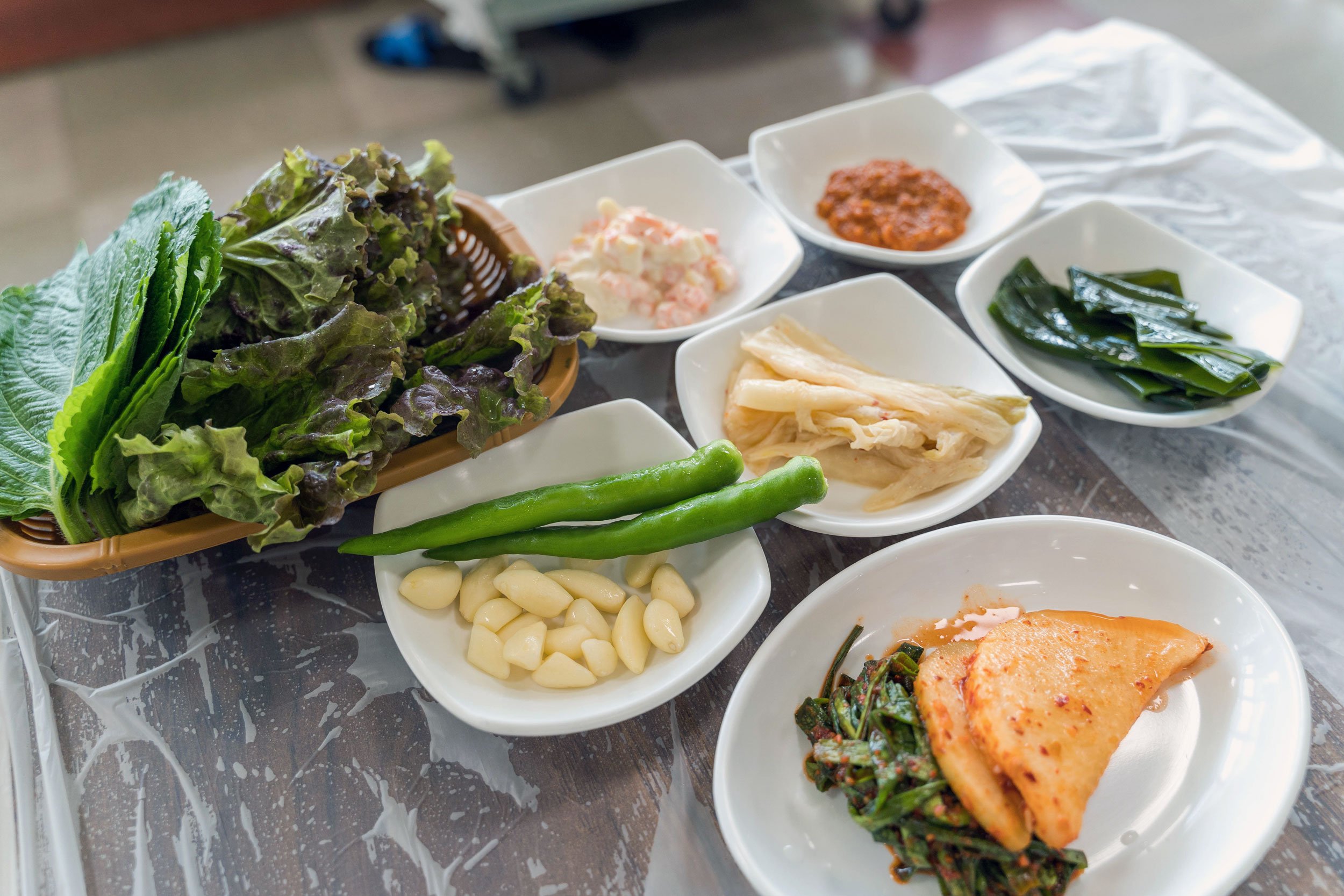
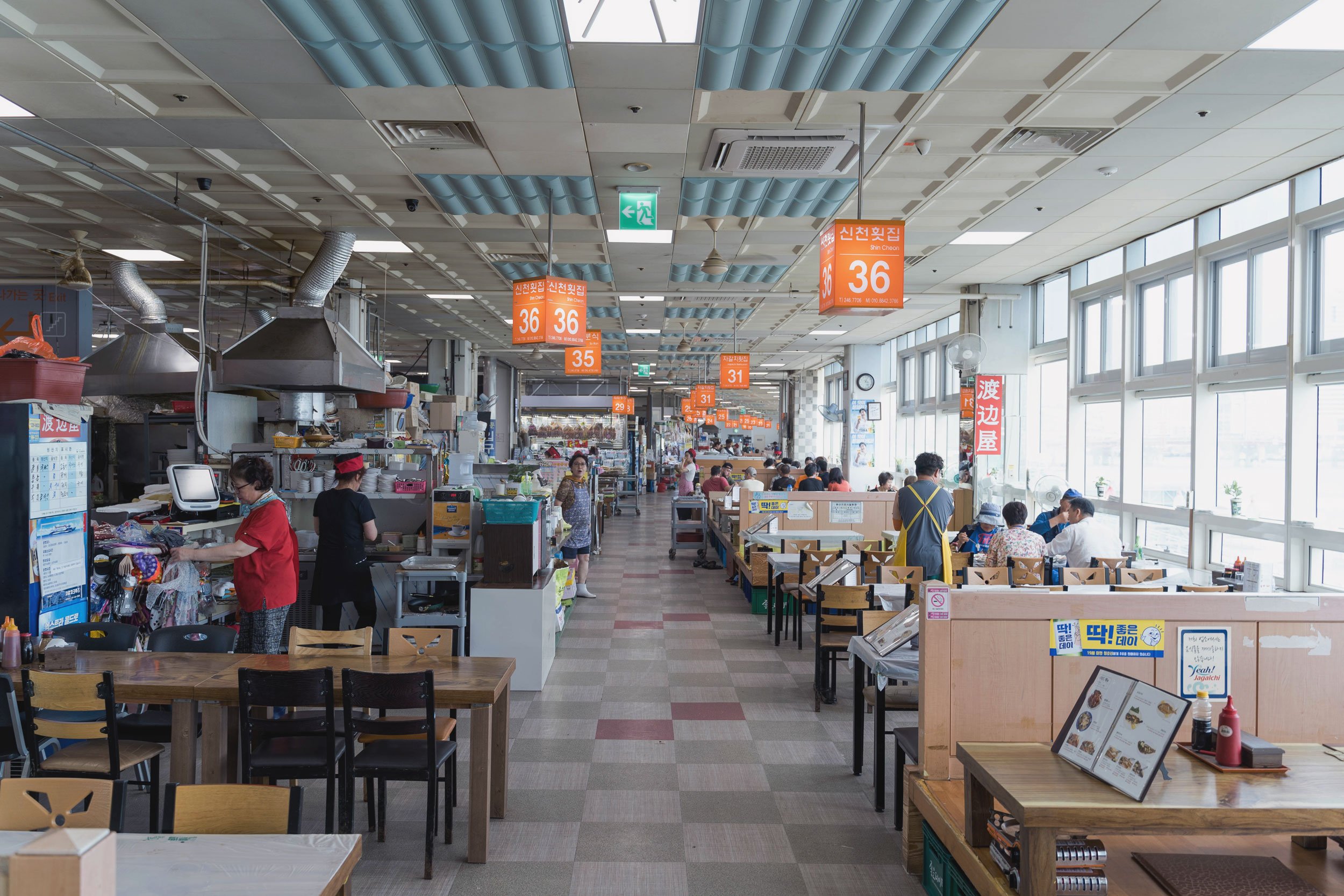
Gukje Market
Also known as Nampodong International Market, Gukje Market is right to the north of Jagalchi Fish Market and Jagalchi metro station.
The market started when refugees fled the Korean War and tried to make a living. It’s one of Korea’s largest markets, featuring alleys of souvenir shops and daily items, as well as street food stalls where you can pull up on a plastic stool for a bite.
While we didn’t do any shopping, it made for a very photogenic and immersive experience as we walked up to our next destination.
Bosu Dong Book Street
Books, books and more books. Bosu Dong Book Street started after Japanese occupation and during the Korean war. Books left behind by the Japanese were sold, and during the war, people sold their possessions for money. It continued to evolve until it’s become what it is today.
The area isn’t that big, but it is packed with small shops completely packed with books with the shop owner somehow fitting inside. For some shops, any more books may trap their owner. There’s even a shop that is only for photoshoots with books (there was a line, too), but we managed to take enough pics in the actual shops.
Finishing up our Busan trip here, we went back to Busan Station to head to our next stop: Seoul.
Gaemijip
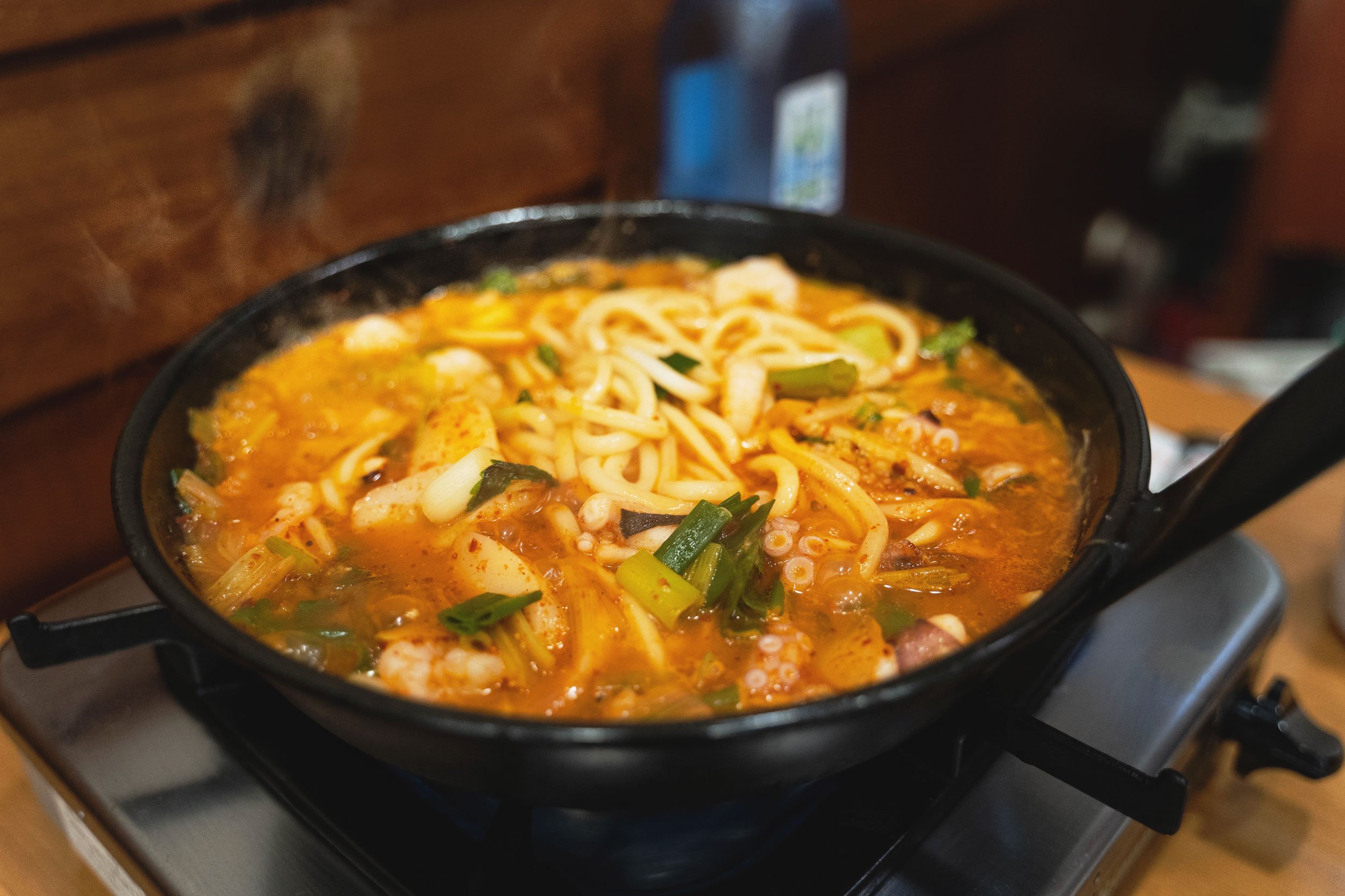
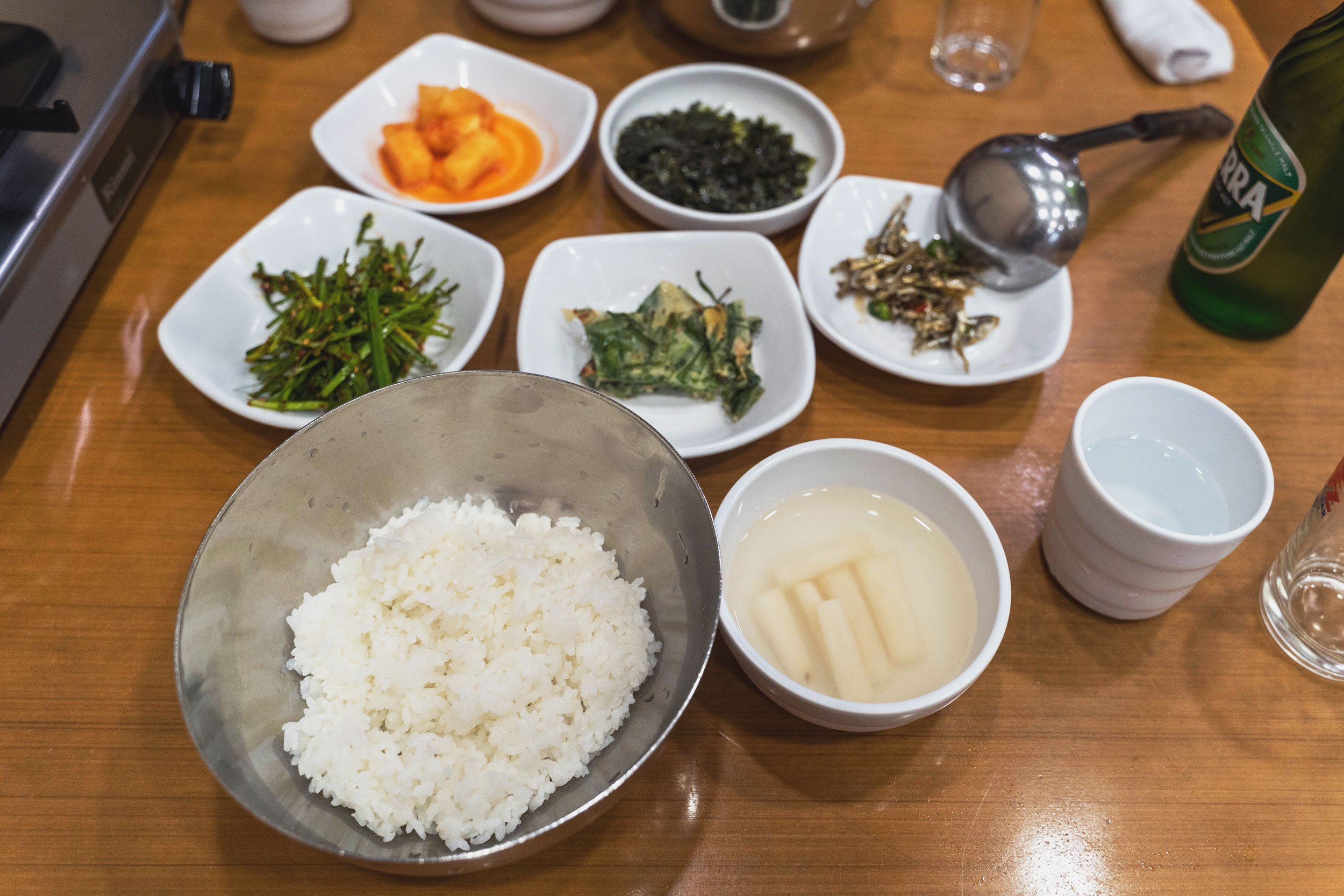
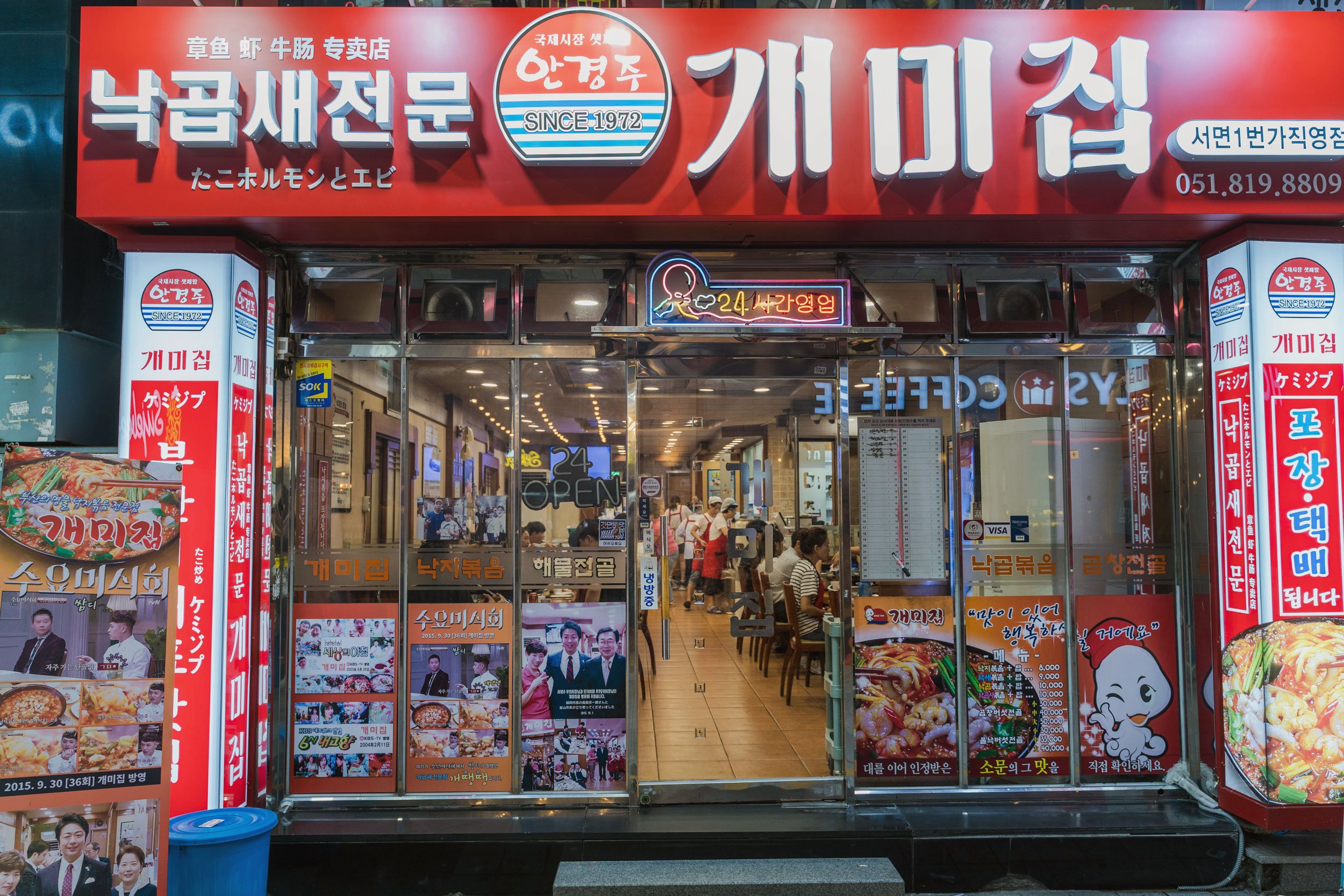
The flavor packed into this pot was nothing short of incredible. This was my favorite meal in Busan, and one of my favorites I’ve had in Korea.
Gaemijip is a 24-hour chain which makes it really convenient. We went to the Seomyeong location for dinner, and it was pretty full - almost all Koreans, so we knew it had to be good.
The main course is a sort of seafood stew. We opted to get the octopus and shrimp option and added udon noodles. We heard that the food here tends to be really spicy, so we went with a mild level one and it was definitely enough. Absolutely delicious and reasonably priced.
Ssangdoongi Dwaeji Gukbap
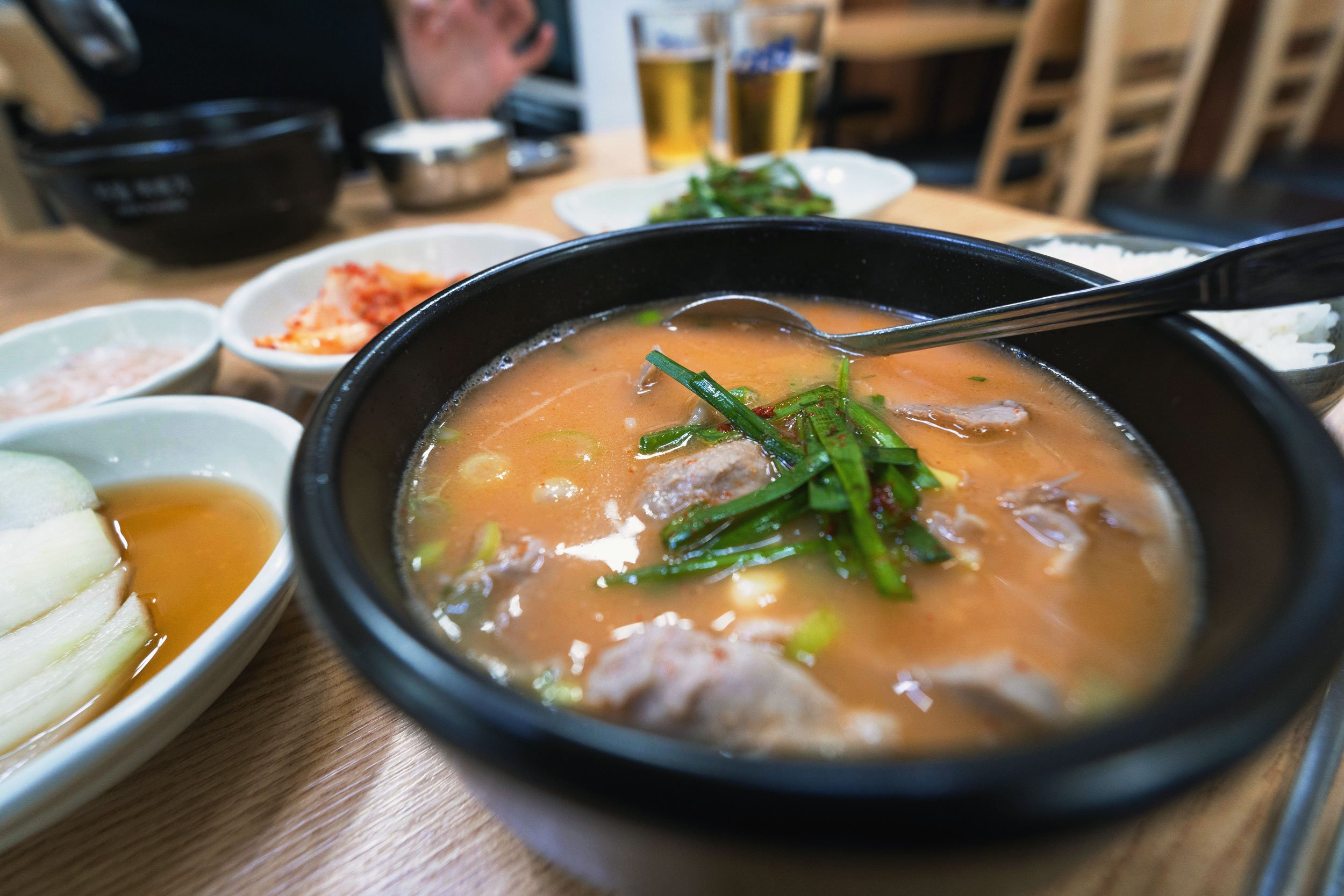
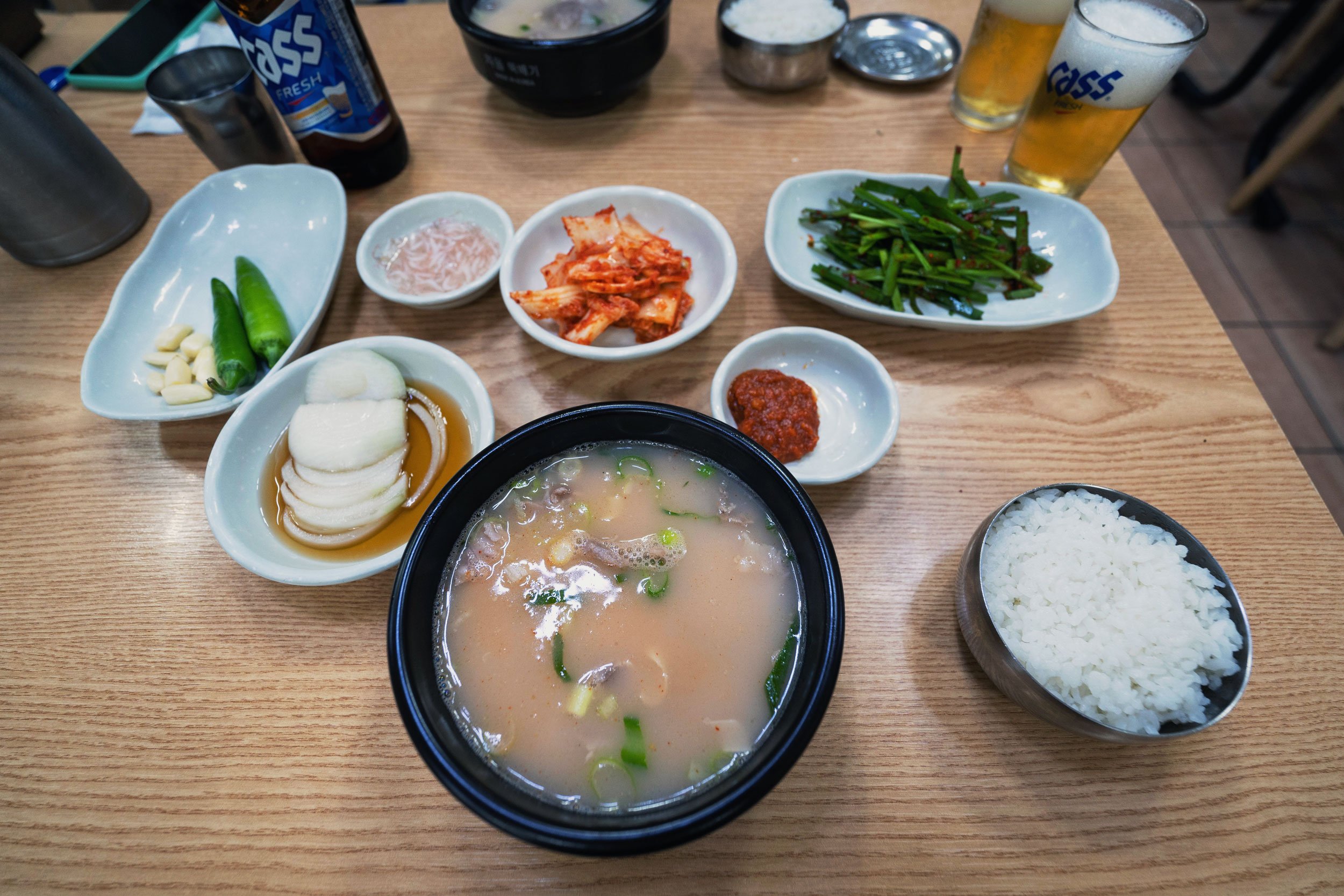
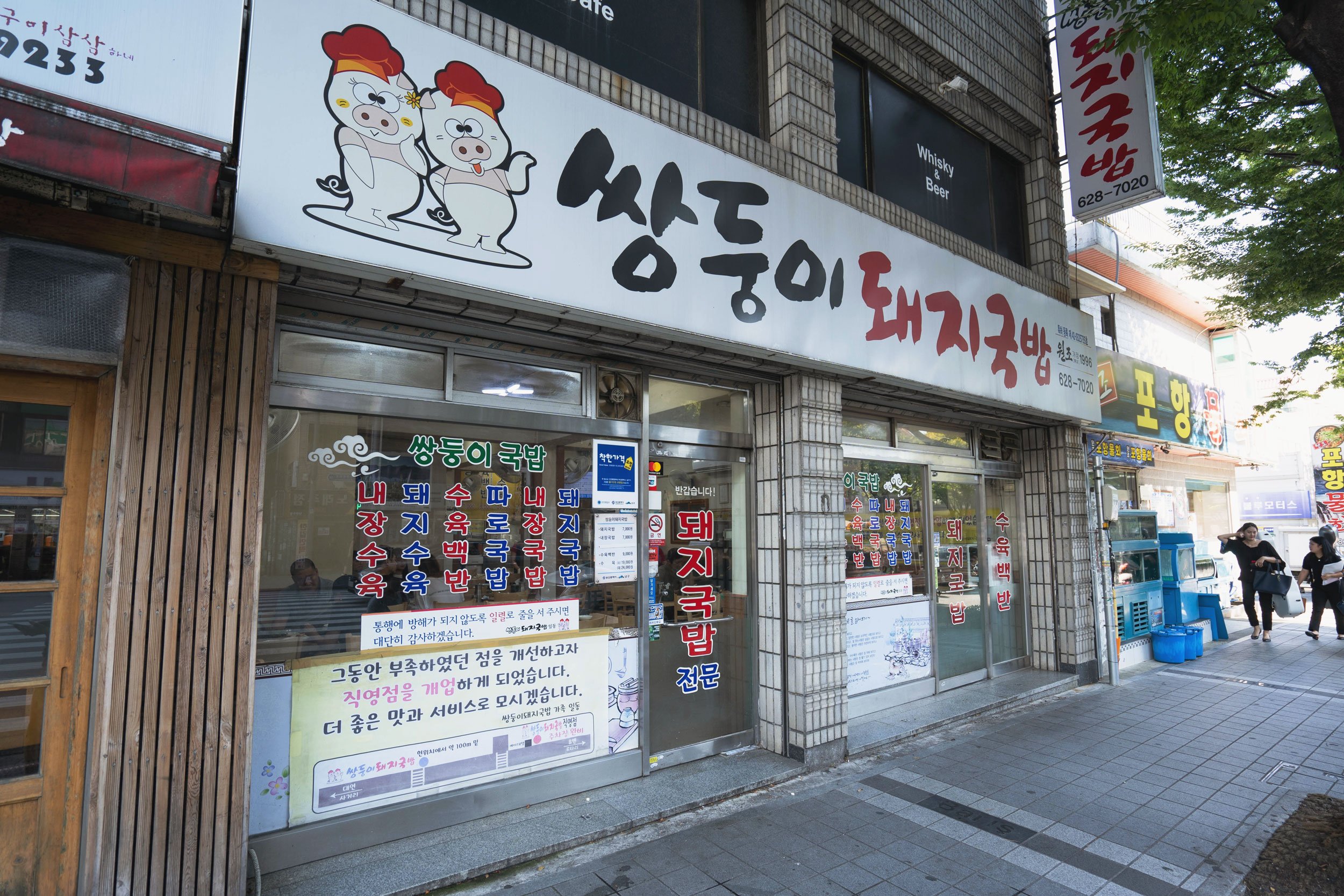
A pork soup spot that is regarded as one of the best in town. Ssangdoongi Dwaeji Gukbap is a few blocks from Daeyeon metro station and is a really local place.
We went for lunch, and got a nice, full bowl of pork soup with an array of all-you-can-eat kim chee and Korean pickles. The soup isn’t spicy at all, but there’s red pepper that you can add to taste and they give you garlic as well.
As expected at a reasonable, local spot, there’s not much English and service is nothing celebrate, but it’s good enough and they come to refill your dishes when you’re out. Nice lunch find for sure, or late night snack as they’re open until midnight.
Gijang Sonkalguksu
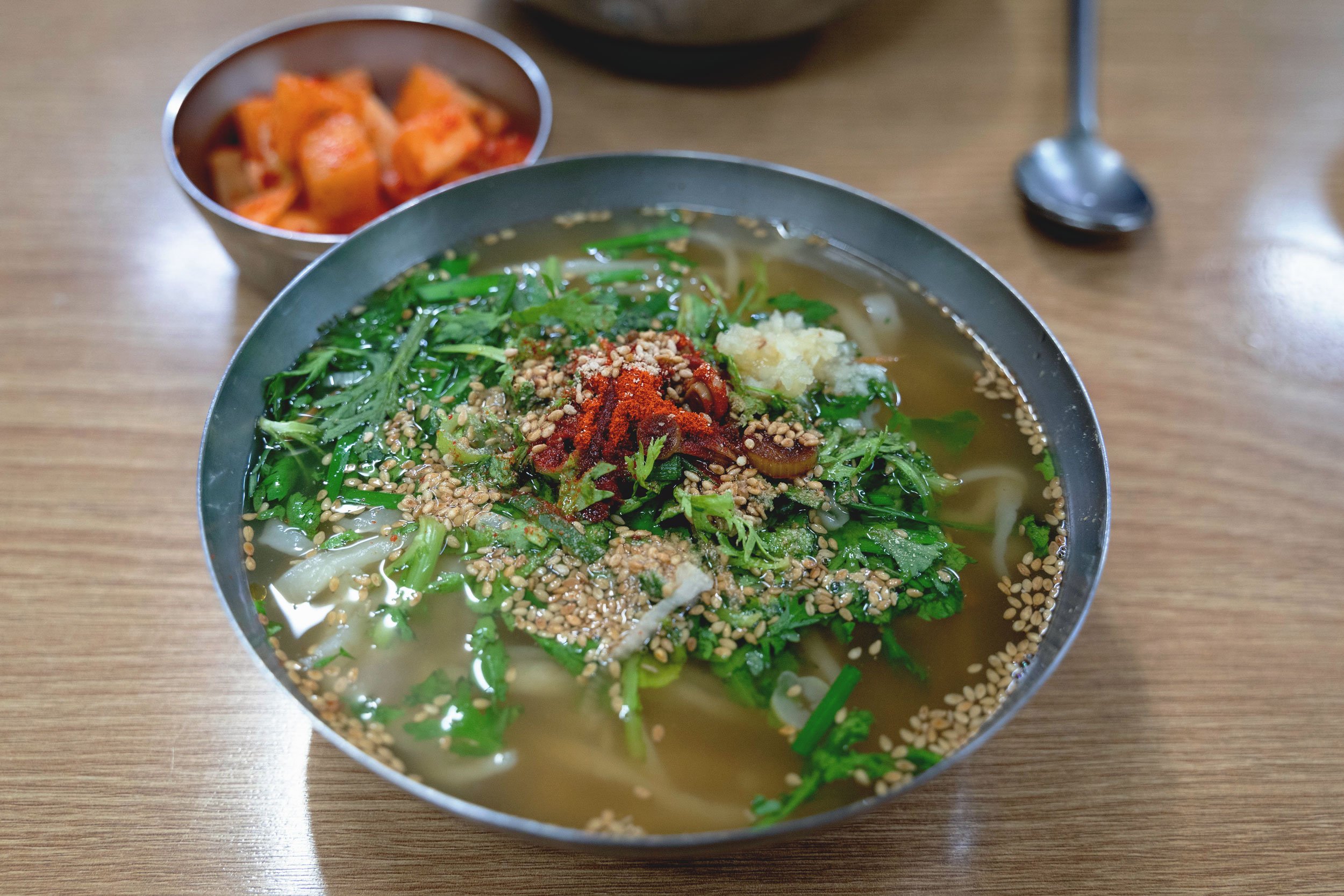
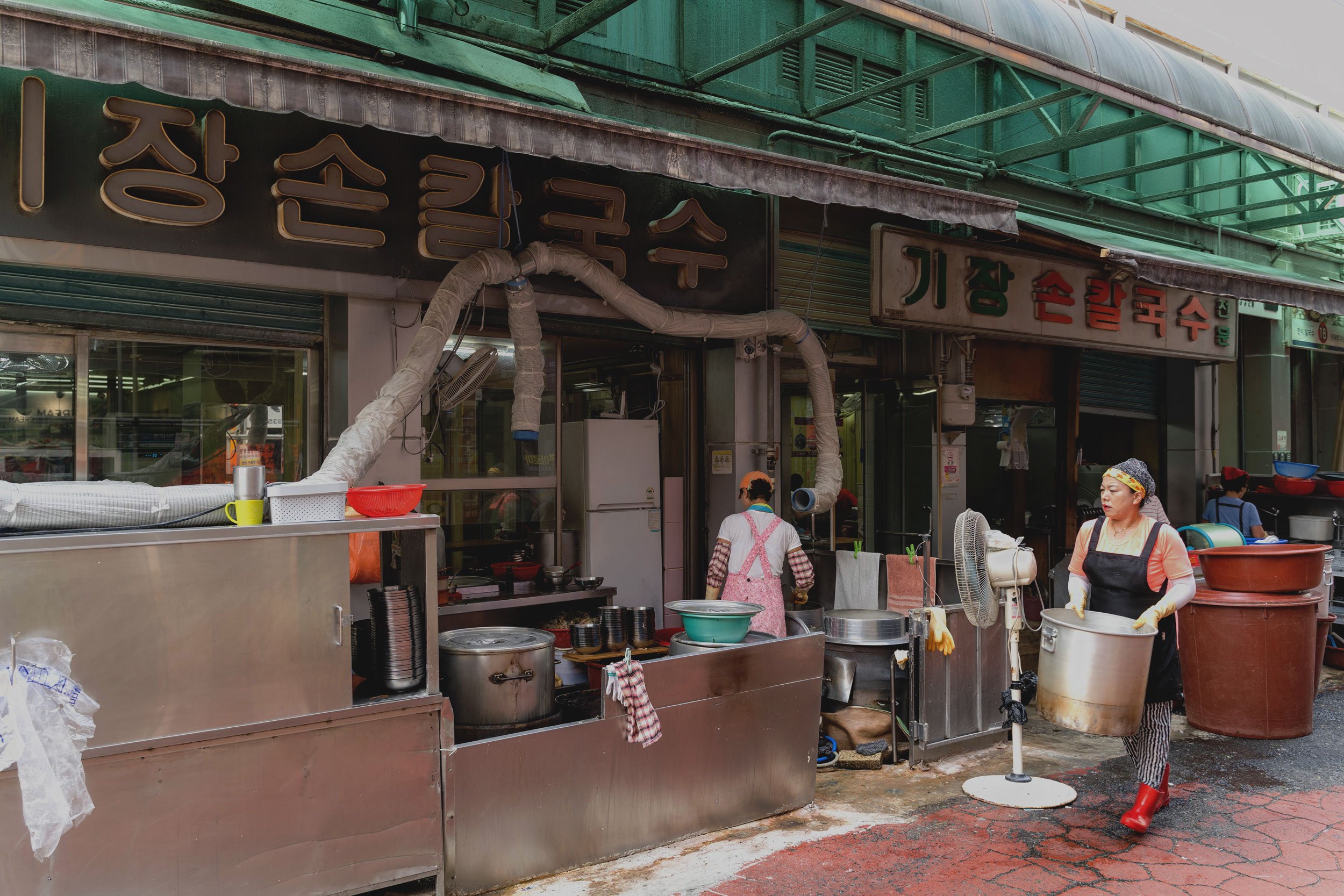
Homemade noodle soup in the heart of the Seomyeong area. This is a really basic, local shop that most likely won’t catch your eye.
The broth is thin and noodles similar to udon, just a little flatter. Women chefs prepare the soup outside, and that in itself is interesting to watch - the years of perfecting the craft going into every cut of noodle and every pour of broth.
Gijang Sonkalguksu opens at 9AM and closes at 9PM. We started our day off here - light yet filling. The only thing to watch out for is the garlic, but that just makes it even more tasty.















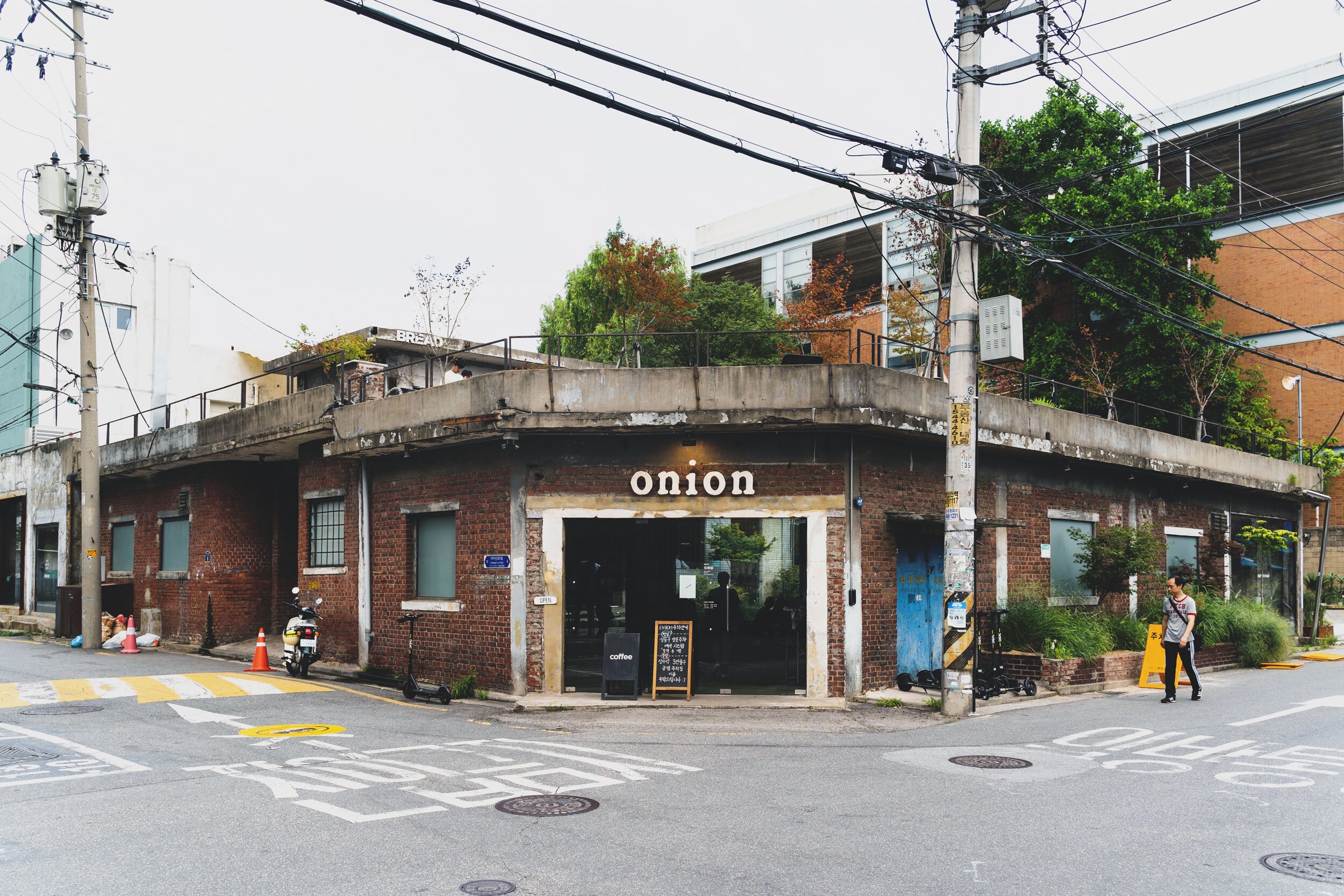



As one of Seoul’s most desirable neighborhoods, Hannam is at Korea’s forefront of fashion and trends.